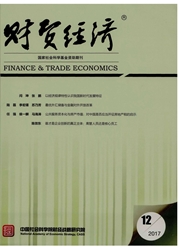

 中文摘要:
中文摘要:
基于经济增长和城市化的双重视角,本文试图研究金融结构影响城乡收入差距的传导机制。在系统梳理金融结构如何影响城乡收入差距的基础上,本文结合中国发展现状提出了待检验的系列研究假说,并采用1996—2015年省际面板数据展开实证检验。理论分析表明,城市居民和农村居民对金融服务的可获得能力存在差异,致使金融结构对城乡收入差距存在直接影响;金融结构通过信贷配置功能影响经济增长和城市化,进而对城乡收入差距产生间接影响。实证结果显示,提升直接融资比例对城乡收入差距存在直接的缩小效应,并通过促进经济增长和加速城市化来降低城乡收入差距,且城市化的中介作用要强于经济增长。由此可见,以“市场主导型”金融体系为导向,逐步放开金融市场管制以提升直接融资比例,将有利于缩小城乡收入差距。
 英文摘要:
英文摘要:
From the perspectives of economic growth and urbanization, this paper proposes several hypotheses on how financial structure affect urban-rural income gap combining with the stylized facts of Chinese economy, and then use a panel data of 29 provinces over 1996-2015 to conduct empirical analysis. Theoretical analysis shows that owing to the distinct availability of urban and rural residents for financial services, financial structure has a direct impact on their income disparity. Meanwhile, through the function of credit allocation, financial structure plays important roles in the processes of economic growth and urbanization, and then has indirect effects. The results find that increasing the ratio of direct financing has a direct negative impact on urban-rural income gap, and indirect negative impacts through economic growth and urbanization are proved. More importantly, the intermediated role of urbanization is stronger than that of economic growth. Therefore, releasing the controls on financial markets helps shrink the urban-rural income gap in China.
 同期刊论文项目
同期刊论文项目
 同项目期刊论文
同项目期刊论文
 期刊信息
期刊信息
